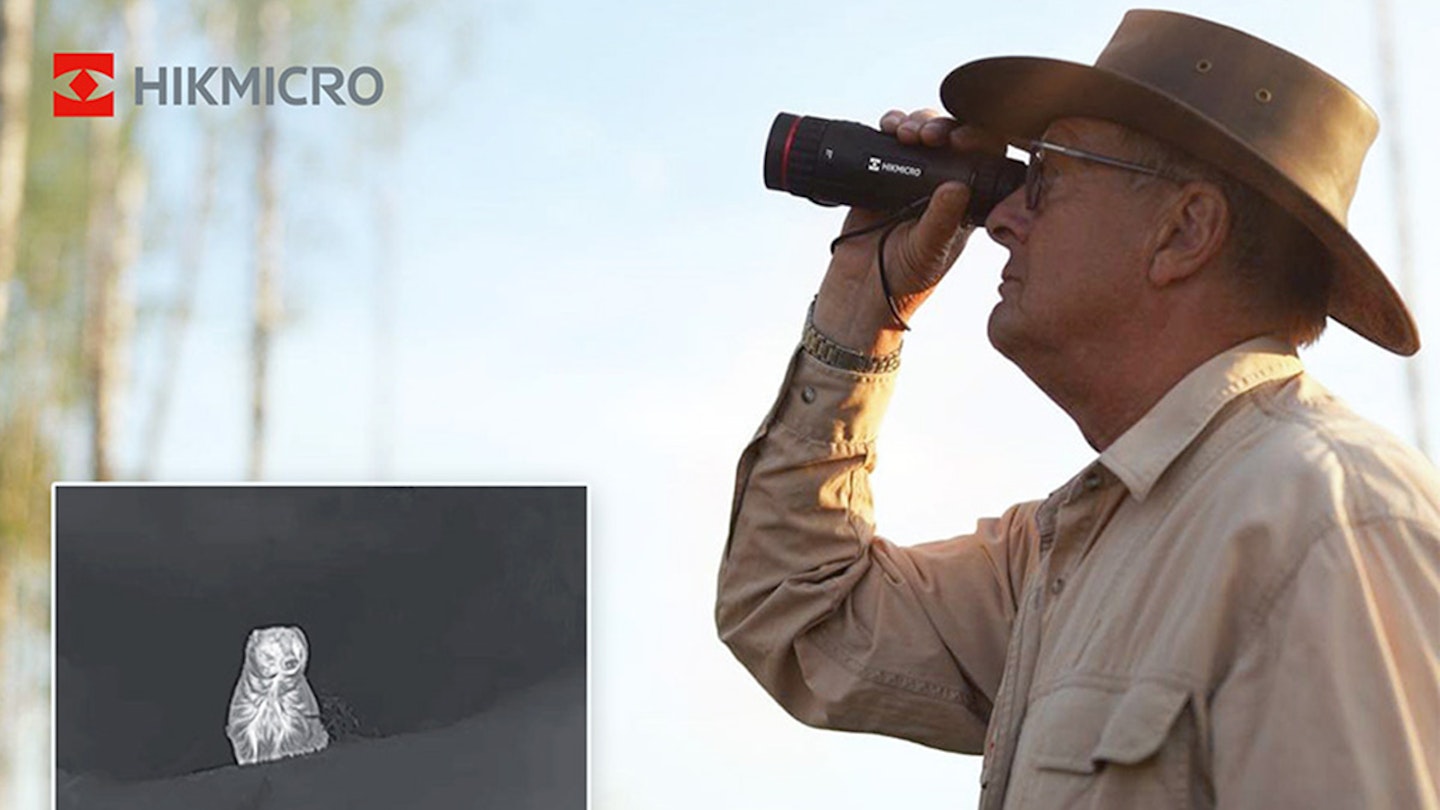Advertorial
by Mike Weedon
The best thermal monocular for wildlife observation
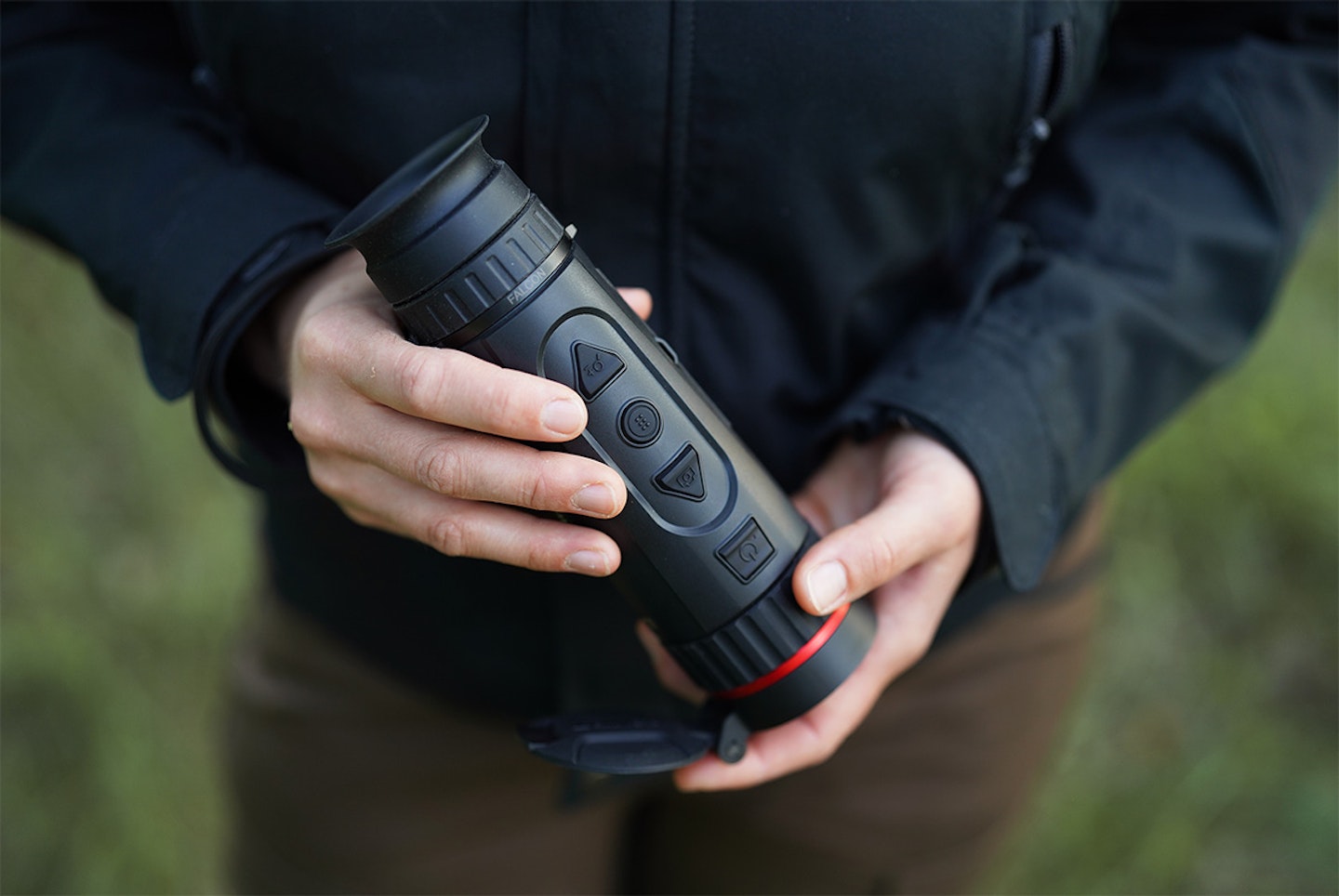
During our lifetimes, there have been some major revolutions in the equipment used in the field by birdwatchers and wildlife observers. The performance of affordable binoculars and telescopes has improved exponentially in recent decades, even tripods have become lighter, sturdier and much more practical (especially with carbon fibre models being used). Then there was the dawn of digital cameras, after which every wildlife watcher could now be a photographer (whether via digiscoping, phonescoping, DSLR or bridge cameras and more recently mirrorless systems). Birdwatchers have started becoming bird listeners with high quality digital audio equipment and brilliant apps to match.
And now, the use of thermal imagers is sweeping the world of wildlife observation. Thermal imaging equipment has quietly and radically changed the way we approach birdwatching and nature watching. Now, we can see in the dark (and through fog and bad weather). Rather than using light to look for our target animals, thermal technology detects differences in temperature between live creatures and their surroundings. Even the most well camouflaged birds or mammals can't hide the heat they radiate from thermal monoculars! We can find cryptic and shy species without having to disturb them. Think of finding Jack Snipes without flushing or Woodcocks on the forest floor in winter. Huge strides have been made in non-intrusive surveying breeding ground nesting birds such as Sky Larks, thanks to thermal imaging.
Thermal images can be used for wildlife observation and for ecological purposes, but also have wider usage in things like search and rescue operations and even in security especially at night.
But, until very recently, I was out of the loop. Now, I feel I am part of the modern thermal imaging scene; my IR eyes have been opened! For the last month or so, I have had the use of the brand new HIKMICRO Falcon FQ25 monocular to use in the field, and I have to say it is a brilliant bit of kit!
It is a solid, chunky, rubber armoured thermal scope which feels very well built and is easy to carry around and remarkably easy to hold steady when in use. This stability is helped by the low magnification of the unit: look through the viewfinder and the image is 1.4x real life. This helps deliver a very wide field of view, much larger than that of the model’s predecessor, the FQ50. This very wide image to an outstanding 31m FOV at a range of 100m, making it a breeze to find birds, mammals (and people) from a distance in all light and weather conditions.
It is possible to zoom in by pressing one of the buttons, but it seems more pixelated at higher mags, like a digital zoom, and I preferred the 1.4x setting with its wide angle of viewing.
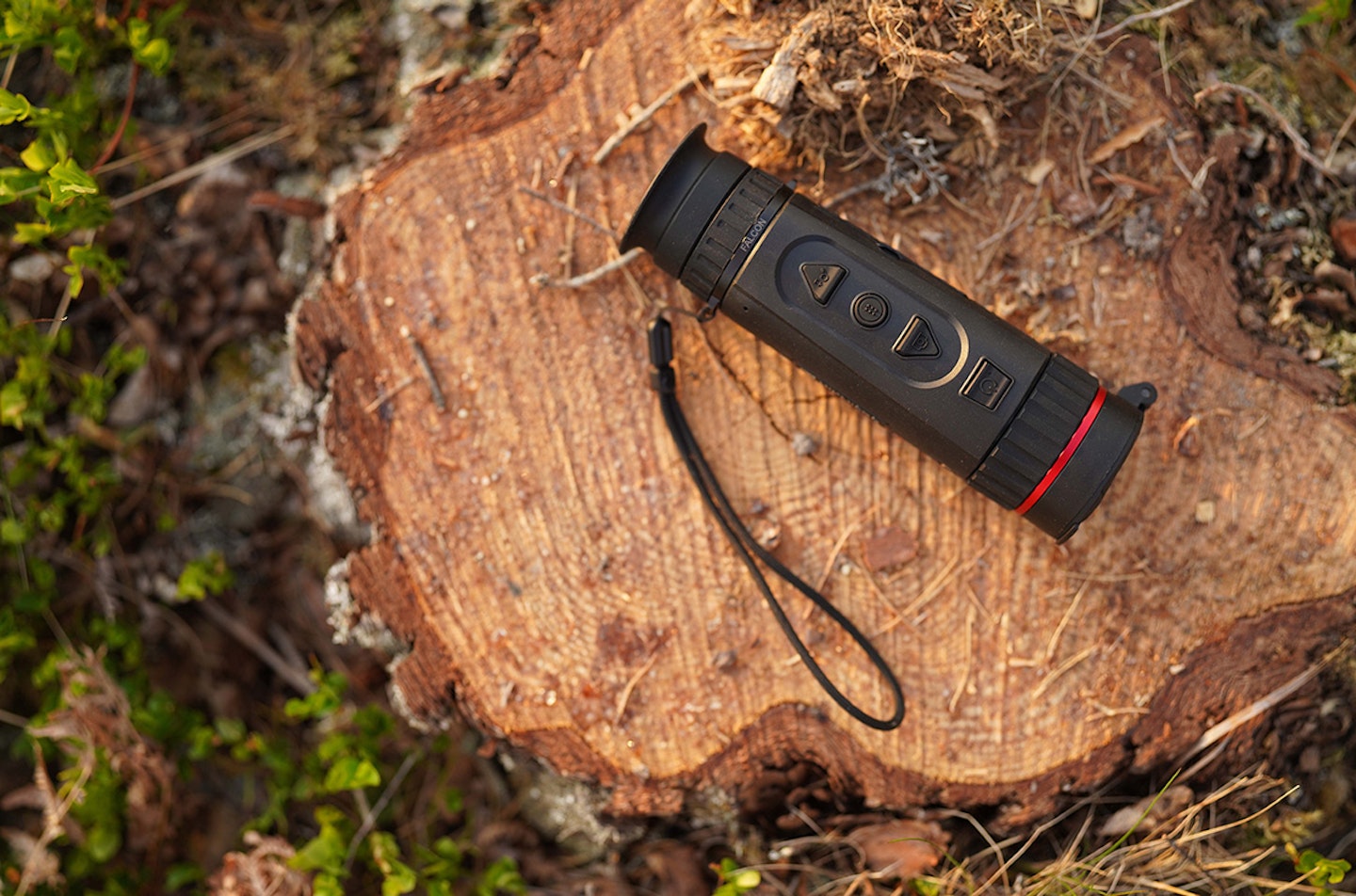
With the rechargeable batteries fully charged (one in the unit, one spare), I couldn’t wait to get out and test the FQ25 in the field and in the dark! A site close to home has had some showy young Long-eared Owls recently, and to find them hiding in in vegetation, a thermal imager is just about essential.
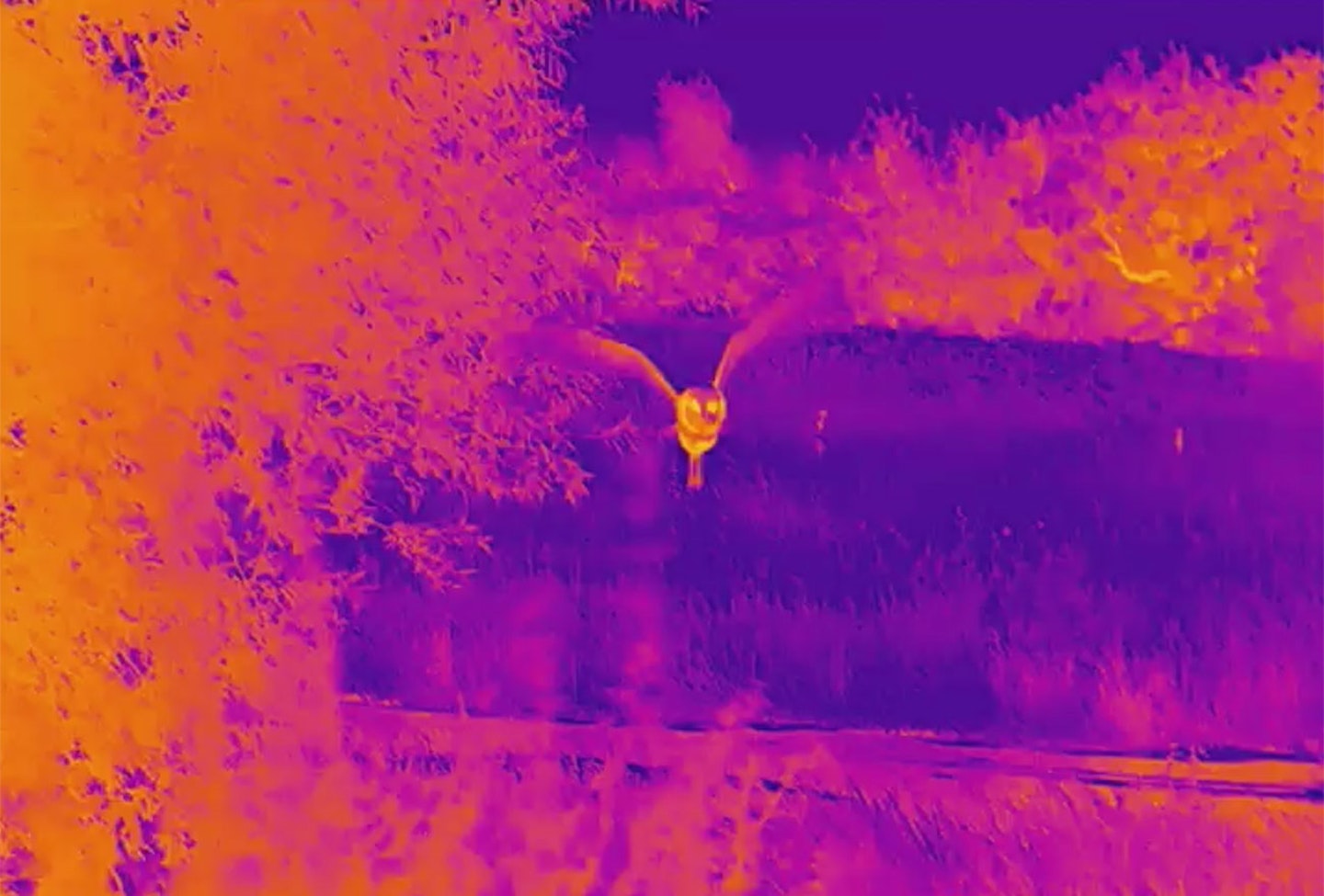
After arriving at the site at sundown, I walked along the raised bank of the River Welland, to where the owls had recently been seen. On the journey I tested the thermal monocular on a Mute Swan on the narrow, shallow river. As I watched it, impressed how the swan glowed through the viewer, a Barn Owl flew into my field of view. I quickly pressed the record button, and managed to capture a quick video of the owl as it flew past me. Thanks to the excellent depth of field and resolution, you can even tell it is a Barn Owl in the screengrabs I could take, its eyes, belly and long legs glowing ‘hot’ in the colourful ‘fusion’ mode I was using when I took the video.
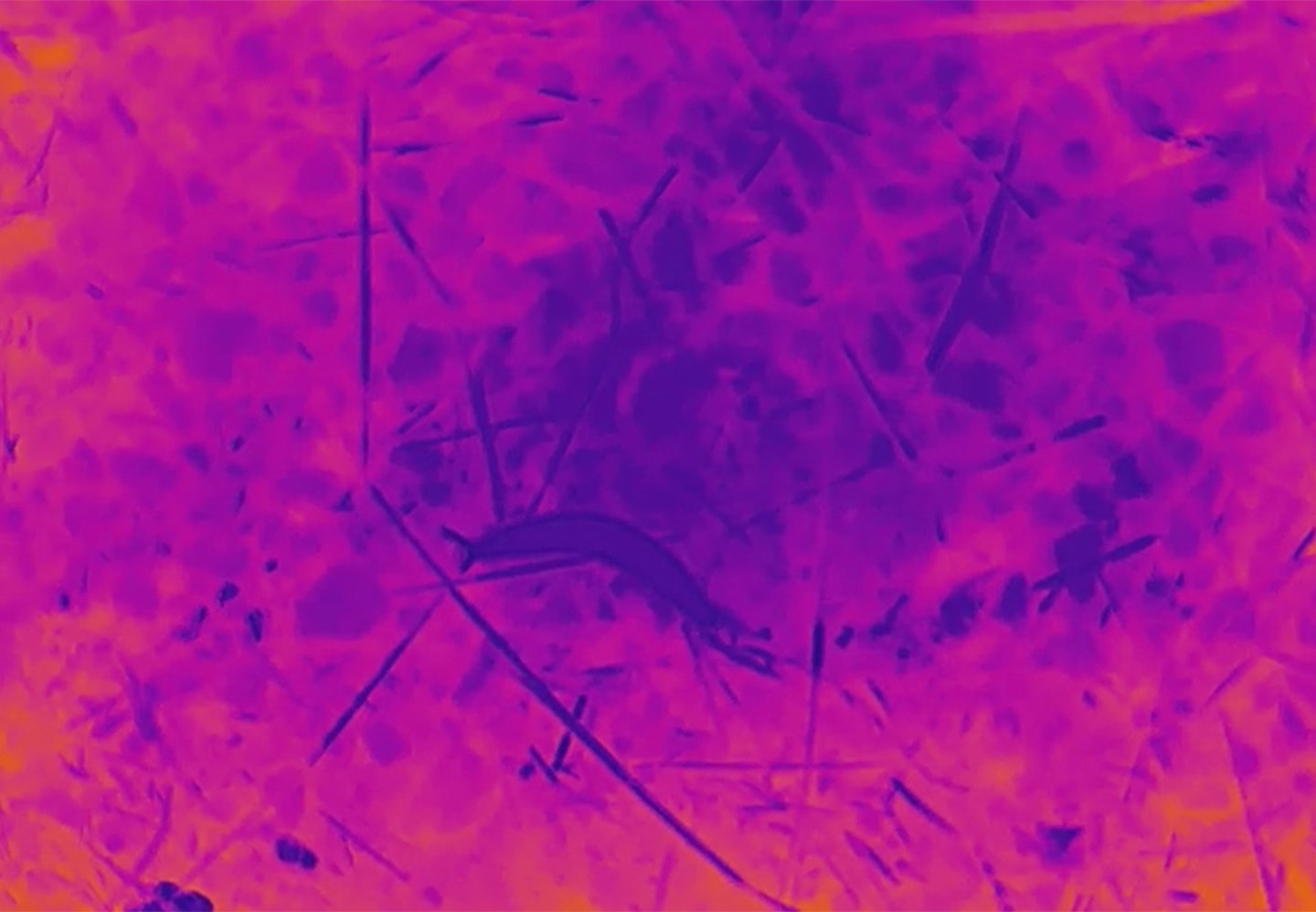
I continued my search for the young Long-eared Owls, but feared I would tread on other unfortunate creatures as I continued walking in the half-light. So, I looked to the path in front of me and immediately could see a slug, proving (also in fusion mode) that slugs are pretty cold creatures!
Sadly, I couldn’t find the Long-eared Owls; but this was not the fault of the Falcon thermal monocular: they simply were not roosting in the area I checked, that night. While searching, though I spotted some creatures glowing bright: Long-tailed Tits finding a roosting bush, and even a mouse-shaped glow (would-be owl food) working its way aver the forest floor. Both the birds and the mammal would have remained unseen and undetected without the thermal monocular.
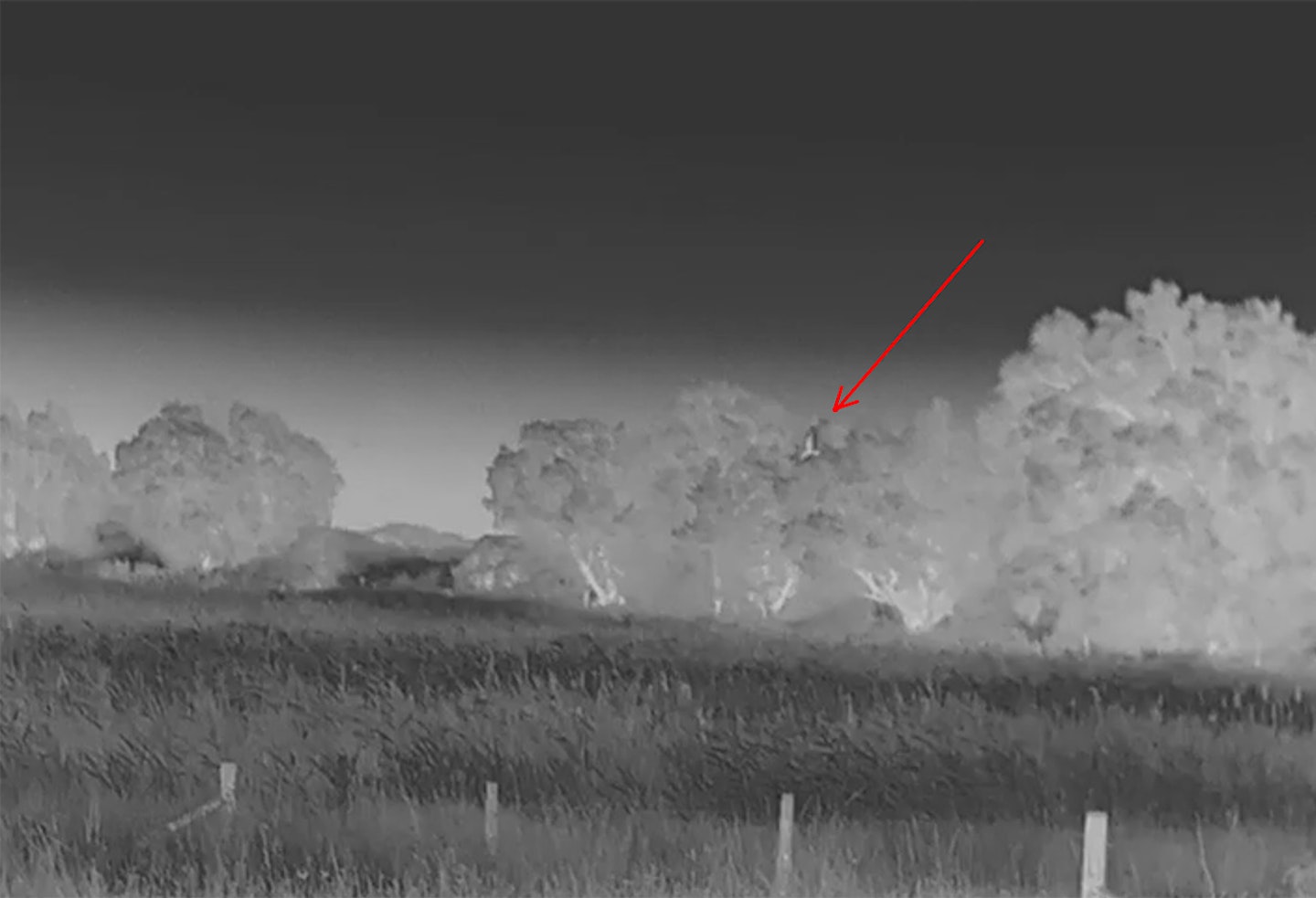
The area was searching abuts an open area with a reedbed which holds a couple of pairs of Marsh Harrier, with recently fledged young. One of these took off from some nearby reeds and circled round before finding a new roost site close to the original place. In daylight, juvenile Marsh Harriers are dark brown all over, with a creamy head. Viewed through the FQ25, though, this young bird was remarkably hot on its underparts, including its underwing coverts and undertail, but cool on the flight feathers below and cool all over, above. In fact, though the viewfinder, the bird looked like it had the plumage of a Booted Eagle or perhaps an Osprey. It was incredible to see the contrast in temperature of the bird.
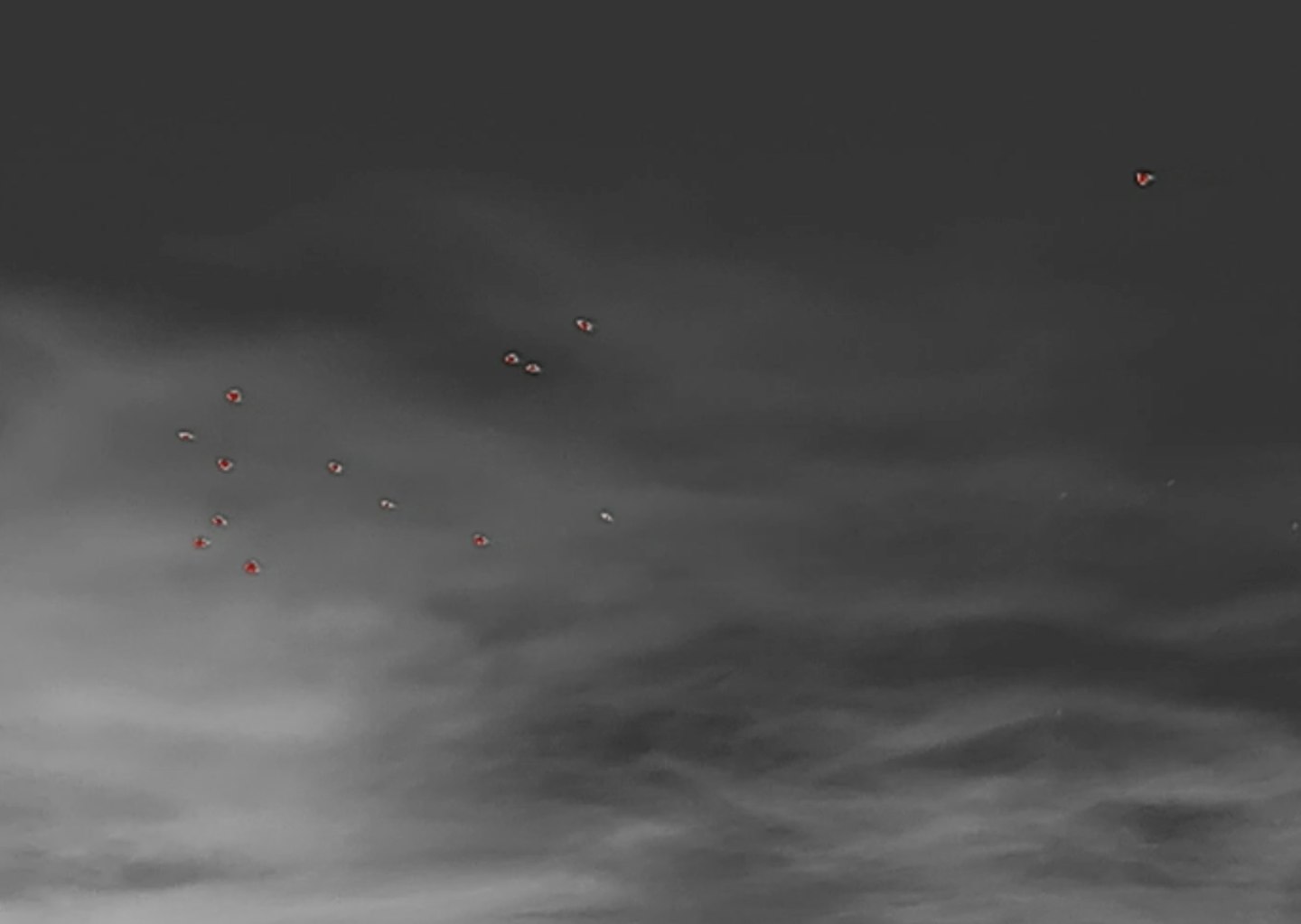
Overhead, I could hear Rooks and Jackdaws going to the large roost here. The Falcon had no problem picking them out. Indeed, it could be an invaluable device for counting birds going to roost, when the light has gone beyond the level for normal observation.
Later, I walked back along the river bank to my car. A hideous barking sound was coming from the longish grass of the nature reserve below the level of the path I was on. I knew it was a Muntjac Deer, but there was no way I could see the barker in the dark, and in the long vegetation. This was no problem for the FQ25, though, and I was able to cycle through the various mode settings as I filmed the barking deer, and even discovered another nearby (in Red Hot mode), presumably why it was barking in the first place.
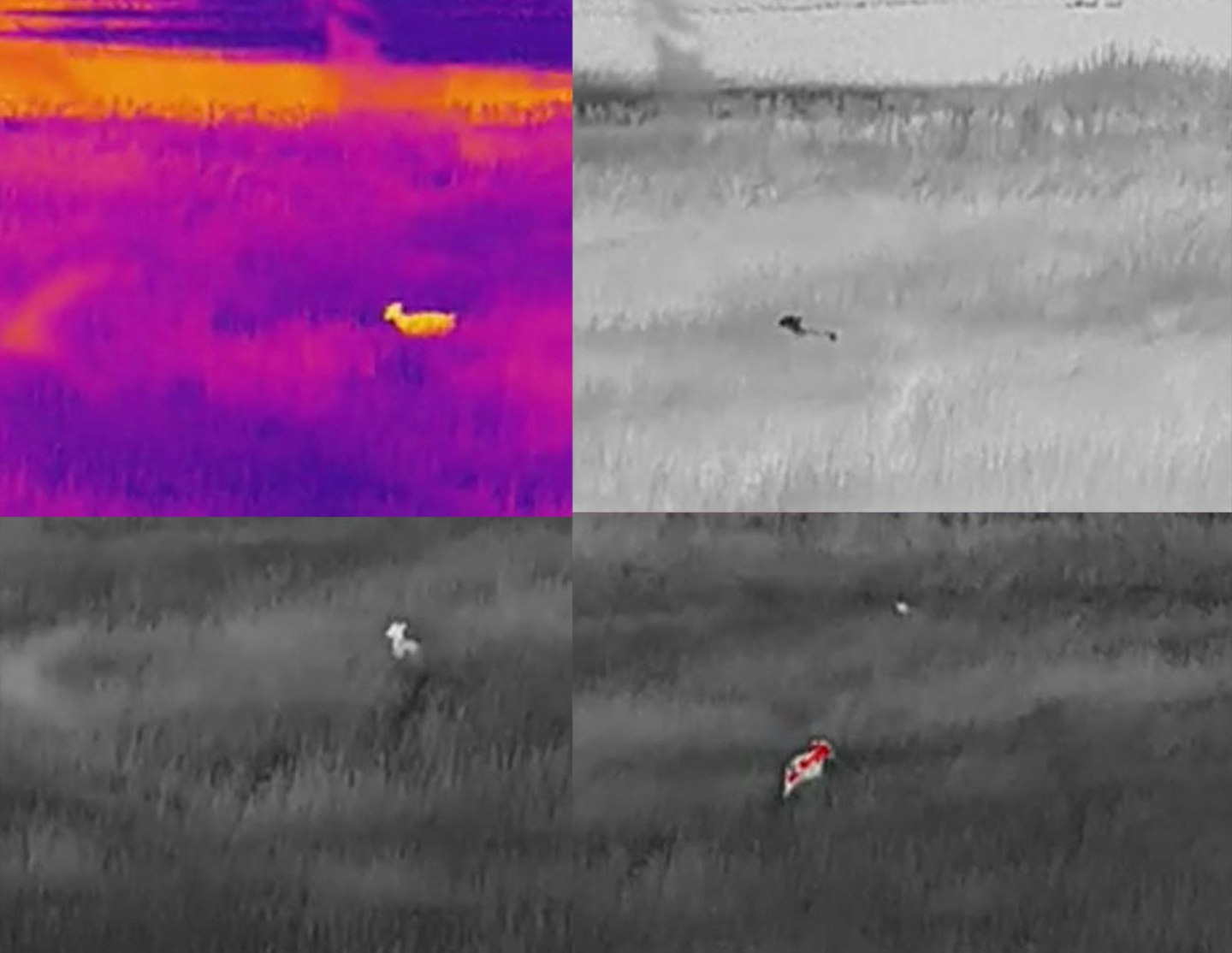
The modes are the aforementioned Fusion which shows warmer temperatures as ‘warmer’, brighter colours, and cooler colours in darker, ‘cooler’ colours; White Hot, which gives a monochrome image, with warmer areas being whiter and cooler areas, dark; Red Hot, which emphasises the hottest areas in red; and Black Hot, which reverses the White Hot mode with warmer areas being darker colours. You can cycle through the modes at the touch of a button; and it is the same button which you hold down for a little longer to start filming. It could not be easier.
Each of the colour modes has its own uses and merits, but I found the Black Hot mode particularly pleasing, making me feel I was in one of those David Attenborough documentaries filming in the Serengeti!
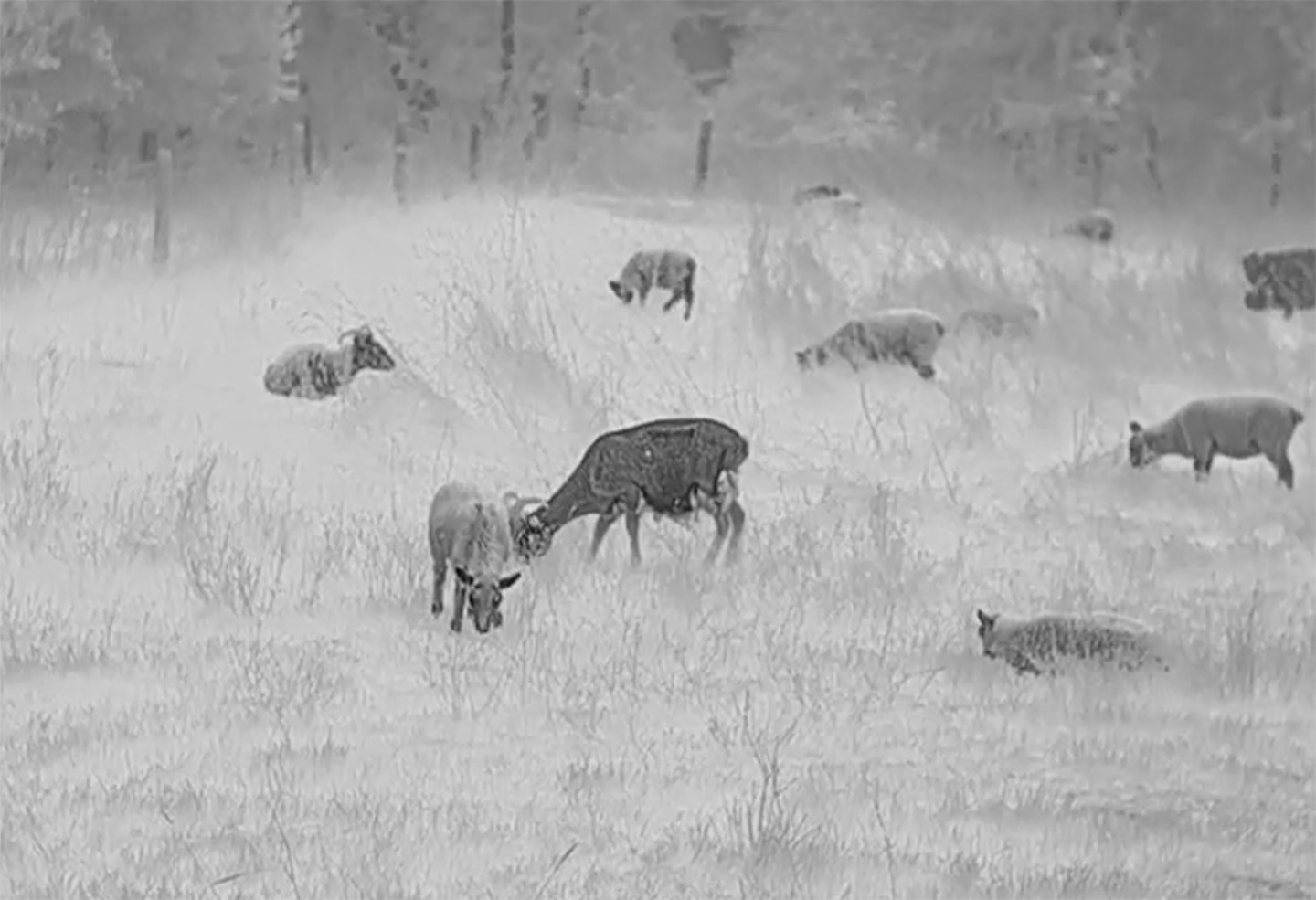

When I was nearly back at my car, I could see though the monocular a small flock of sheep which are being used to manage the nature reserve, but spend most of their time in a smaller enclosed field. There are two types of sheep there, wholly dark ones and dark-headed, whiter-bodied ones. Looking at these sheep, Red Hot mode particularly revealed what we are taught in school that dark surfaces radiate the most heat! Remarkable!
Wild mammal watching
The next expedition I took with the FQ25 was mainly to look not for sheep, but for proper wild mammals: Badgers! So, in the evening, I tried my luck visiting what I believed to be an active Badger sett in a forest close to home. And arrived while it was still rather light, and had a while to wait for any activity at the sett. I had turned the monocular on and had set it to stand-by as I waited. Finally, when I could barely see anything without the thermal imager, I could just see a black-and-white nose poking out of the largest hole of the sett.
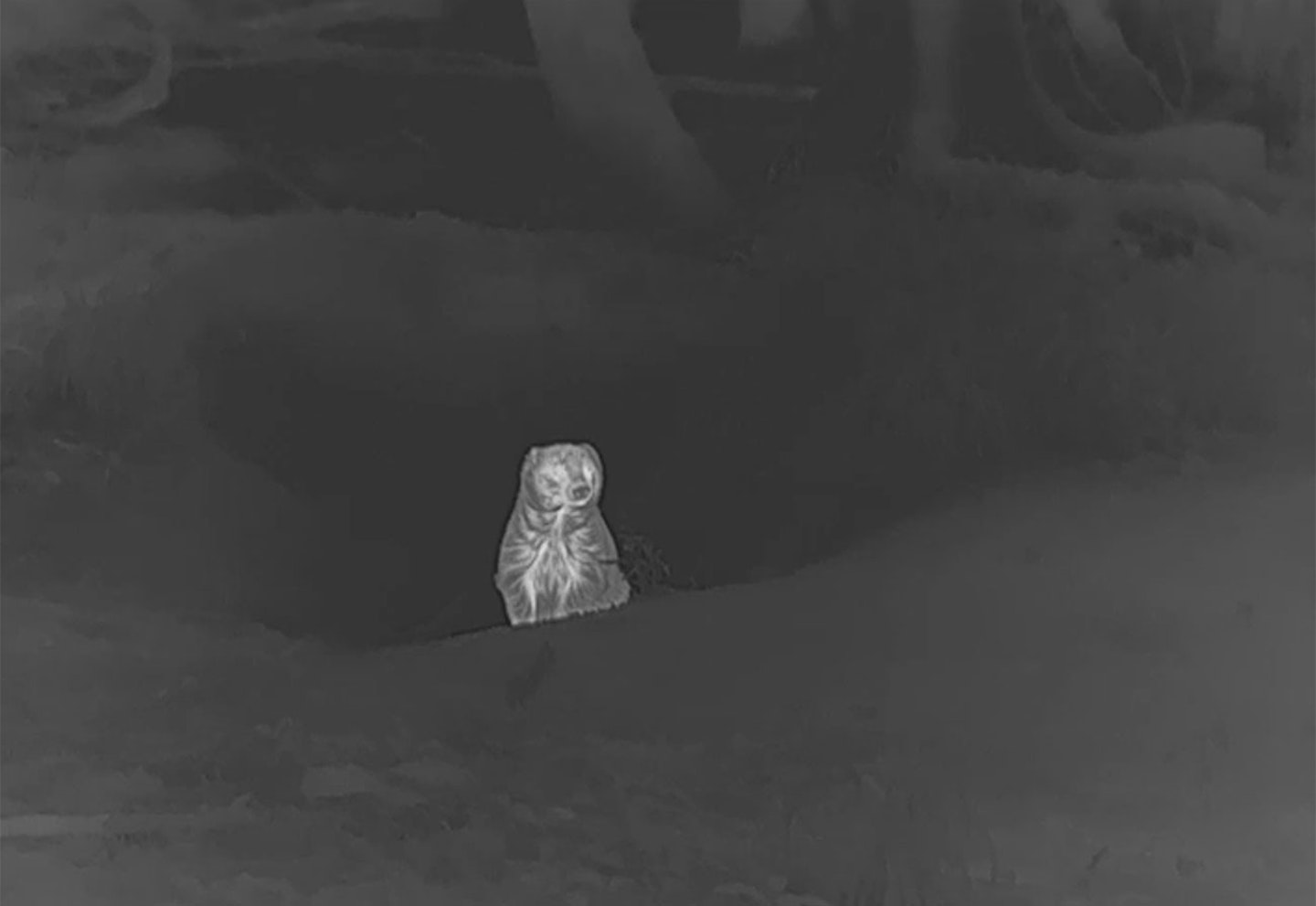
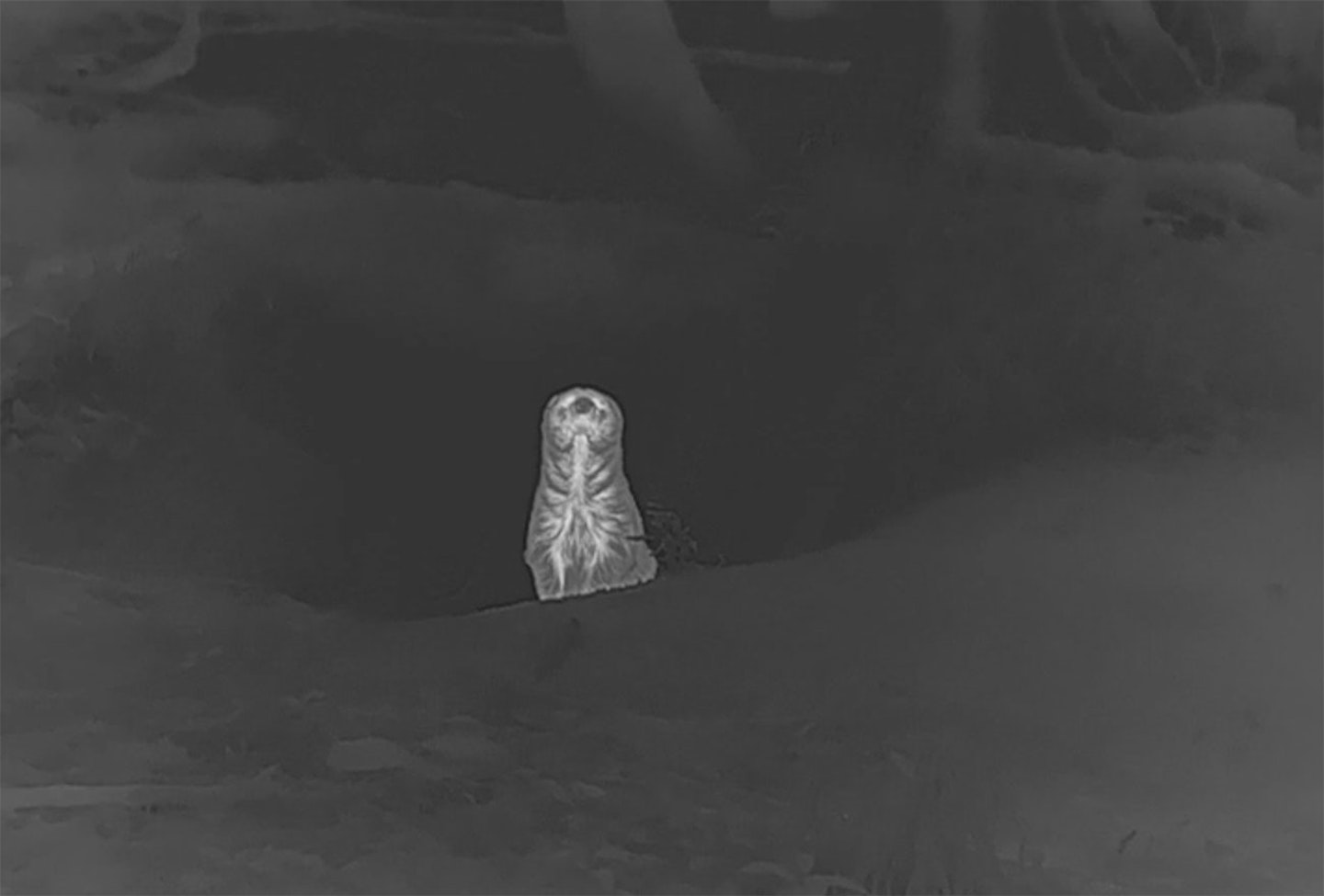
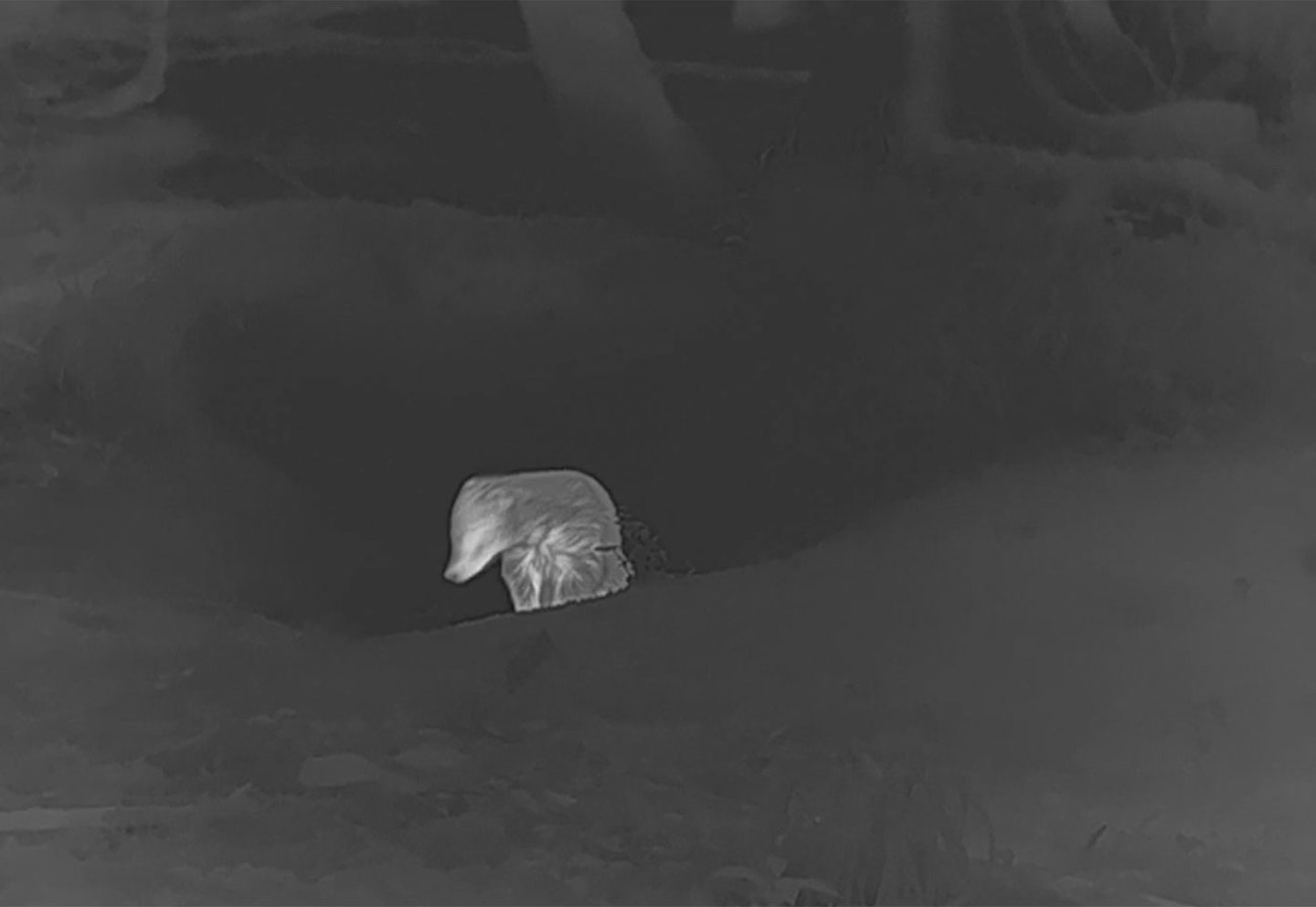
I quickly pressed the record button and within a second or two I was videoing a Badger scouting to see if the coast was clear. It raised its nose and sniffed the air. Badger eyesight is not great, and I don’t think it saw me, but it could smell me! In a flash it went back into the hole, but not before I had captured some video in White Hot mode.
What I had recorded was easy to download via a USB lead to my computer and from the videos I could easily take screengrabs of the ‘freeze-frames’. Direct USB can be replaced by the even easier to use HIKMICRO Sight App: simply download the APP in your phone, and everything you capture (image or videos) will save in your app directly; you can view the real-time images of your #HIKMICRO devices on your phone! In my time with the FQ25
I only explored a small amount of the menu and perhaps did not get to use every available option.But in the short time I had with the Falcon thermal monocular, I learned so much, saw so much which I would (and could) never have seen without it. It is a great device, high quality, easy to use and perhaps most of all, it is a huge amount of fun, bringing a new dimension to wildlife watching.
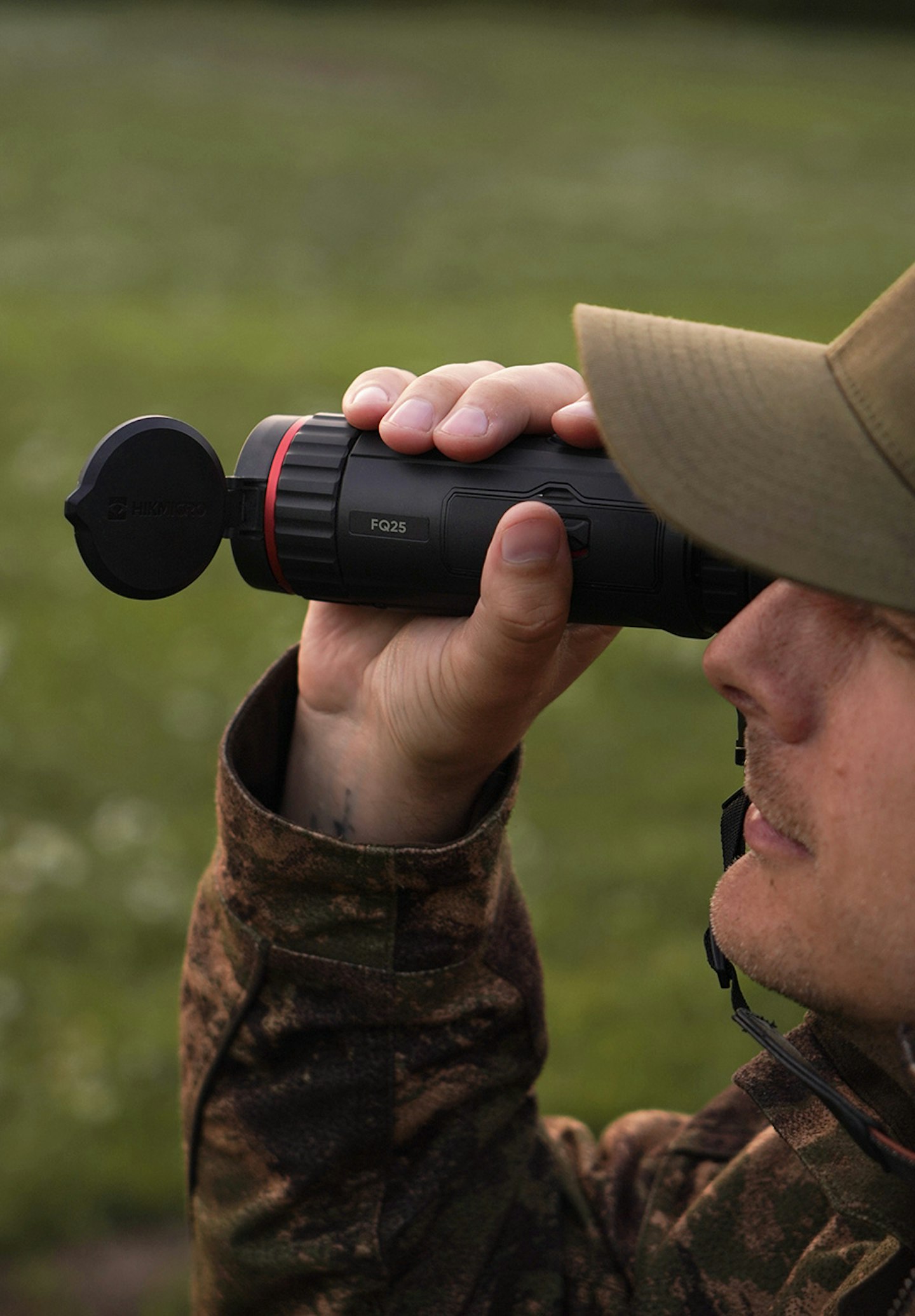
HIKMICRO Falcon FQ25 specs
Price: £2,125.99
Image sensor: VOx Uncooled Focal Plane Arrays
Frame rate: 50Hz
Pixel interval: 12µm
Response waveband: 8Mm to 14Mm
NETD: Less than 20mK (@25°C),F#=1.0
Detection range: 1,200m
Field of view (H xV) degrees: 17.5° x14.0°
FoV m @100m: 30.8m x24.6
Min focusing distance: 2.5m
Aperture: F1.0
Digital zoom 1x, 2x, 4x, 8x
For detailed information, see the HIKMICRO website:
http://www.hikmicrotech.com/en/explore/outdoor-nature-blog/outdoor-nature-packed-ready-outdoors-not-only-in-sight/
